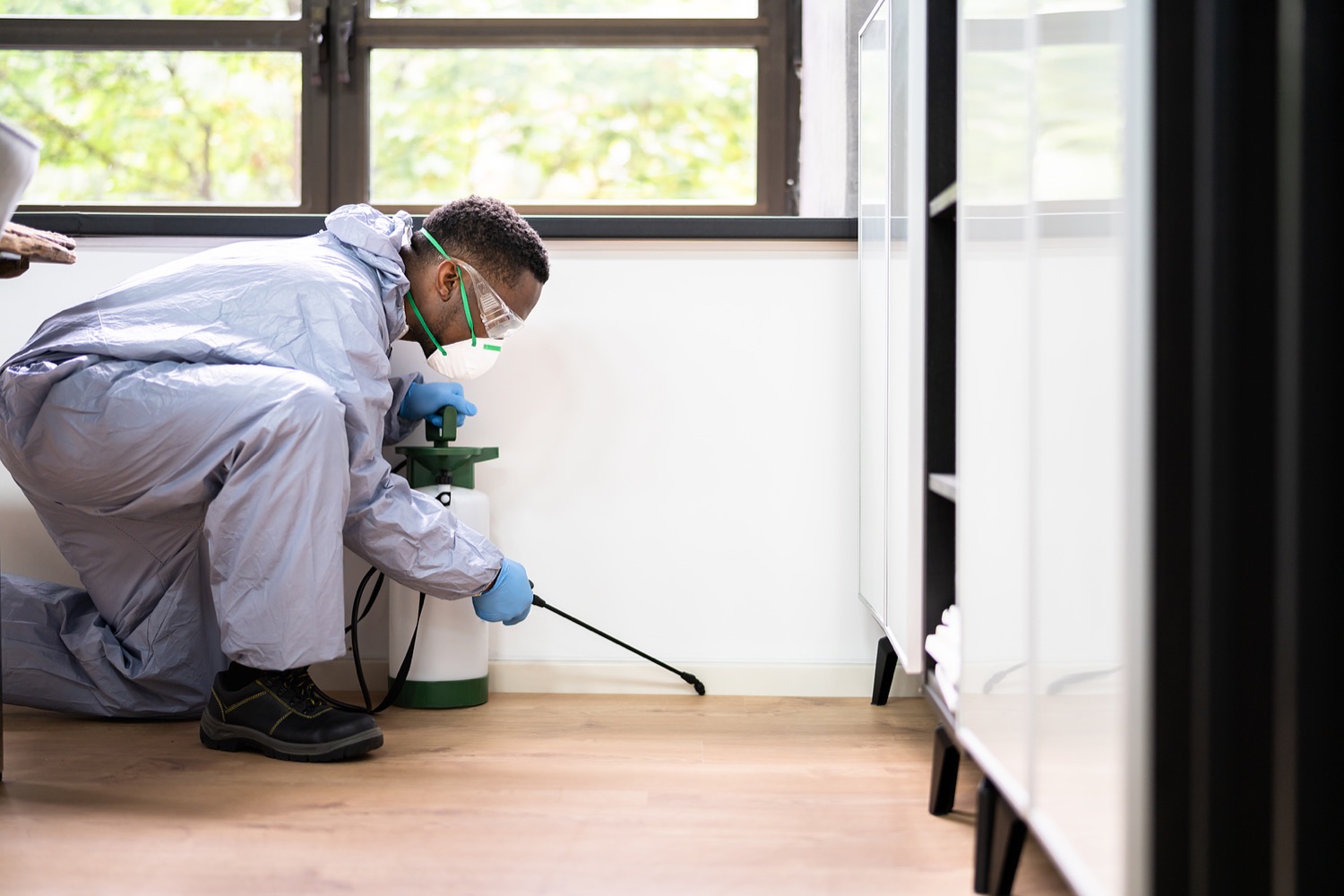Specialist A1 Portland Bed Bug Exterminator - Get Rid of Bed Bugs Quick
Specialist A1 Portland Bed Bug Exterminator - Get Rid of Bed Bugs Quick
Blog Article
Efficient Pest Control Providers: A Comprehensive Appearance at Elimination Techniques and Avoidance Steps
In the world of bug control services, the successful management of problems requires a careful method that combines numerous strategies and measures for both eradication and avoidance. From Integrated Parasite Administration (IPM) approaches that focus on lasting services to chemical elimination techniques created for targeted removal, the toolbox versus parasites is huge and diverse.

Integrated Insect Administration (IPM) Approaches
Integrated Parasite Monitoring (IPM) Strategies encompass a comprehensive approach to pest control that concentrates on control, tracking, and prevention approaches to successfully handle insect populaces. By integrating numerous techniques, IPM aims to reduce the influence of insects while additionally lowering the reliance on chemical pesticides. Prevention exists at the core of IPM, stressing techniques like proper cleanliness, maintenance of hygiene, and sealing access indicate prevent insects from infesting buildings. Monitoring plays an important duty in IPM by frequently evaluating and determining pest degrees to figure out the proper intervention limits. Control techniques in IPM focus on the usage of physical, organic, and cultural techniques before turning to chemical treatments as a last hotel. These strategies consist of introducing natural predators, environment alteration, and utilizing trapping tools to keep bug populations in check. Generally, IPM promotes a sustainable and environmentally conscious technique to pest administration, promoting lasting options that safeguard both human health and wellness and the ecosystem.
Chemical Extermination Methods
Chemical elimination strategies are typically used in insect control solutions to successfully get rid of pest populations that position a hazard to human health and wellness and property. These techniques include using different chemical substances particularly designed to target and eliminate parasites such as pests, rodents, and other undesirable animals. The application of pesticides, pesticides, rodenticides, and other chemical agents is thoroughly managed to make certain optimum performance while minimizing risks to humans, pets, and the environment.
One of the essential benefits of chemical elimination strategies is their capacity to give fast and targeted results, making them especially valuable in instances of severe invasions or immediate parasite control requirements - a1 portland bed bug exterminator. However, it is vital to emphasize the significance of appropriate handling, application, and disposal of these chemical products to protect against unplanned injury
Additionally, integrated insect monitoring (IPM) techniques frequently integrate chemical elimination techniques with other methods such as cleanliness, environment adjustment, and organic controls to create a lasting and detailed bug control method. By including chemical elimination techniques carefully within an IPM structure, insect control solutions can properly take care of insect populations while minimizing potential threats to human wellness and the atmosphere.
Biological Pest Control Methods
Employing natural predators and parasites to take care of insect populaces is a sustainable technique understood as organic parasite control. This approach uses the natural systems of the ecological community to regulate insect populations without counting on artificial chemicals. One typical biological control technique includes introducing all-natural adversaries of the target bug varieties, such as ladybugs for aphid control or nematodes for termite infestations. These all-natural predators prey on the insects, helping to maintain their populations in check.
Another reliable organic control method is using microbial insecticides. These are normally occurring bacteria, such as viruses, fungi, and bacteria, that particularly target and infect particular bug species. By utilizing these microbial agents, insect populations can be effectively decreased without causing or damaging valuable microorganisms damage to the environment.
Physical Bug Avoidance Actions
Executing physical parasite avoidance steps entails using barriers and architectural adjustments to discourage insects from going into or infesting a residential or commercial property. Installing door moves, displays on windows, and securing cracks in the structure can assist avoid bugs like insects and rodents from getting accessibility inside.
One more physical prevention measure is the use of barriers like fencing to keep bigger pests such moved here as raccoons or deer far termite barrier from the property. Mounting mesh or wire displays around yards can secure plants from being harmed by insects. Proper waste administration, including safeguarding wastebasket with tight-fitting lids, is necessary in preventing bugs like bugs, raccoons, and rats. By implementing these physical insect prevention actions, homeowner can significantly reduce the danger of parasite problems and the damage they can trigger.
Professional Insect Evaluation Treatments
Carrying out systematic and comprehensive pest evaluations is a basic element of professional insect administration methods. Expert parasite assessors are educated to diligently analyze homes for indications of problems, recognizing pest species, access factors, and helpful conditions.

Verdict
In final thought, effective pest control services employ a variety of techniques, including Integrated Bug Monitoring approaches, chemical extermination techniques, organic controls, and physical avoidance procedures. Expert parasite examination procedures play a vital duty in determining and dealing with pest issues in a timely manner. By executing a mix of these techniques, homeowner can effectively stop and handle pest infestations.
From Integrated Pest Management (IPM) methods that focus on sustainable remedies to chemical extermination methods developed for targeted removal, the arsenal versus parasites is complex and vast.Integrated Parasite Monitoring (IPM) Techniques include a comprehensive strategy to pest control that concentrates on control, surveillance, and avoidance techniques to effectively handle pest populations.Chemical extermination strategies are typically employed in parasite control services to effectively eradicate pest populaces that pose a danger to human health and property.Utilizing all-natural predators and bloodsuckers to handle parasite populations is a lasting technique recognized as organic pest control.In basics final thought, efficient pest control services use a selection of strategies, including Integrated Bug Management techniques, chemical elimination methods, biological controls, and physical prevention measures.
Report this page